LeRoy Davis
LeRoy Davis’ Personal Narrative was derived from information found in public records, military personnel files, and local/state historical association materials. Please note that the Robb Centre never fully closes the book on our servicemembers; as new information becomes available, narratives will be updated to appropriately represent the life story of each veteran.
Please contact the Robb Centre for further clarification or questions regarding content or materials.
Military Honor(s):
Distinguished Service Cross
Citation: The President of the United States of America, authorized by Act of Congress, July 9, 1918, takes pleasure in presenting the Distinguished Service Cross to Private Leroy Davis (ASN: 1403409), United States Army, for extraordinary heroism in action while serving with Company L, 370th Infantry Regiment, 93d Division, A.E.F., at Mont-de-Sanges, France, 18 September 1918. Private Davis went out, under heavy fire, to the aid of a runner who had been wounded, applied first aid, took the messages of the wounded man, and delivered them to their destination.
Life & Service
- Birth: 27 February 1887, Kansas City, MO, United States
- Place of Residence:
- Race/Ethnicity: African American
- Death: 28 September 1924 Champaign, IL, United States
- Branch: Army
- Military Rank: Private
- Company: [L]
- Infantry Regiment: 370th
- Division: 93rd
LeRoy Davis was born to B.W. Davis (?-?) and Estella Dysart (1850-1930) on 27 February 1887, in Kansas City, Missouri. Details regarding LeRoy’s early life are largely unknown. Before the War, LeRoy worked in Kansas City as a porter.
LeRoy enlisted in the U.S. Army on 25 July 1917 as a Private. Private Davis and his company left Newport News, Virginia on the U.S. Army Transport Ship President Grant on 7 April 1918, arriving in Brest, France on 14 April. Private Davis received the Distinguished Service Cross for his actions on 18 September 1918, near Mont-de-Sanges, France;
“The President of the United States of America, authorized by Act of Congress, July 9, 1918, takes pleasure in presenting the Distinguished Service Cross to Private Leroy Davis (ASN: 1403409), United States Army, for extraordinary heroism in action while serving with Company L, 370th Infantry Regiment, 93d Division, A.E.F., at Mont-de-Sanges, France, 18 September 1918. Private Davis went out, under heavy fire, to the aid of a runner who had been wounded, applied first aid, took the messages of the wounded man, and delivered them to their destination”.
Awarded DSC by CG, AEF, December 6, 1918. Published in G.O. No. 46, W.D., 1919.
Private Davis and his company left Brest, France on 2 February 1919 aboard an U.S. Army Transport Ship arriving at Camp Upton, New York, on 9 February. Private Davis was Honorably Discharged on 24 February 1919.
After his Discharge, LeRoy lived in Champaign, Illinois, working as a porter for a fraternity house, later as a hod carrier (plaster tender) for a plastering company. LeRoy died in Champaign on 28 September 1924 due to homicide; the only personal information known about LeRoy is one marriage and child (both names unknown).
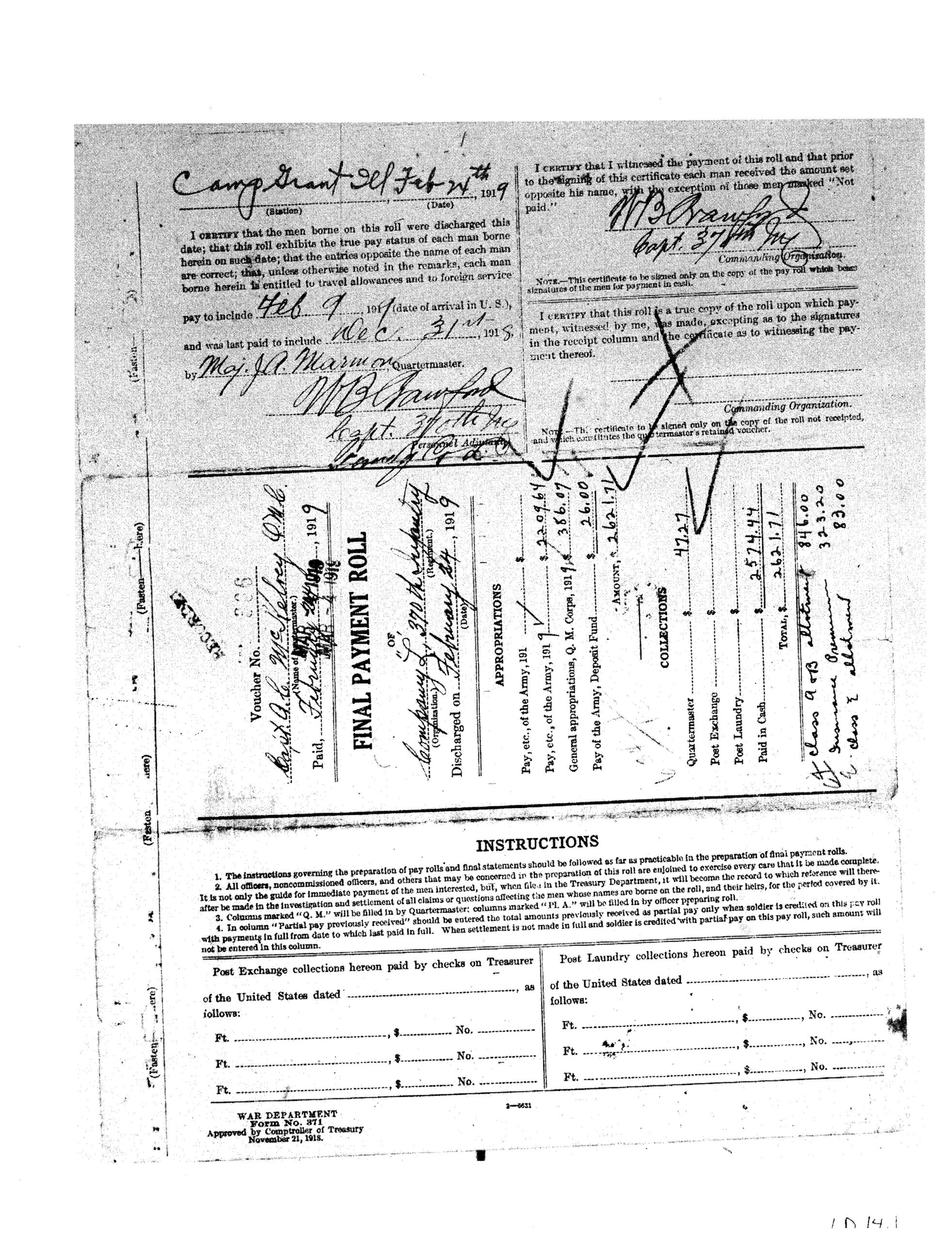

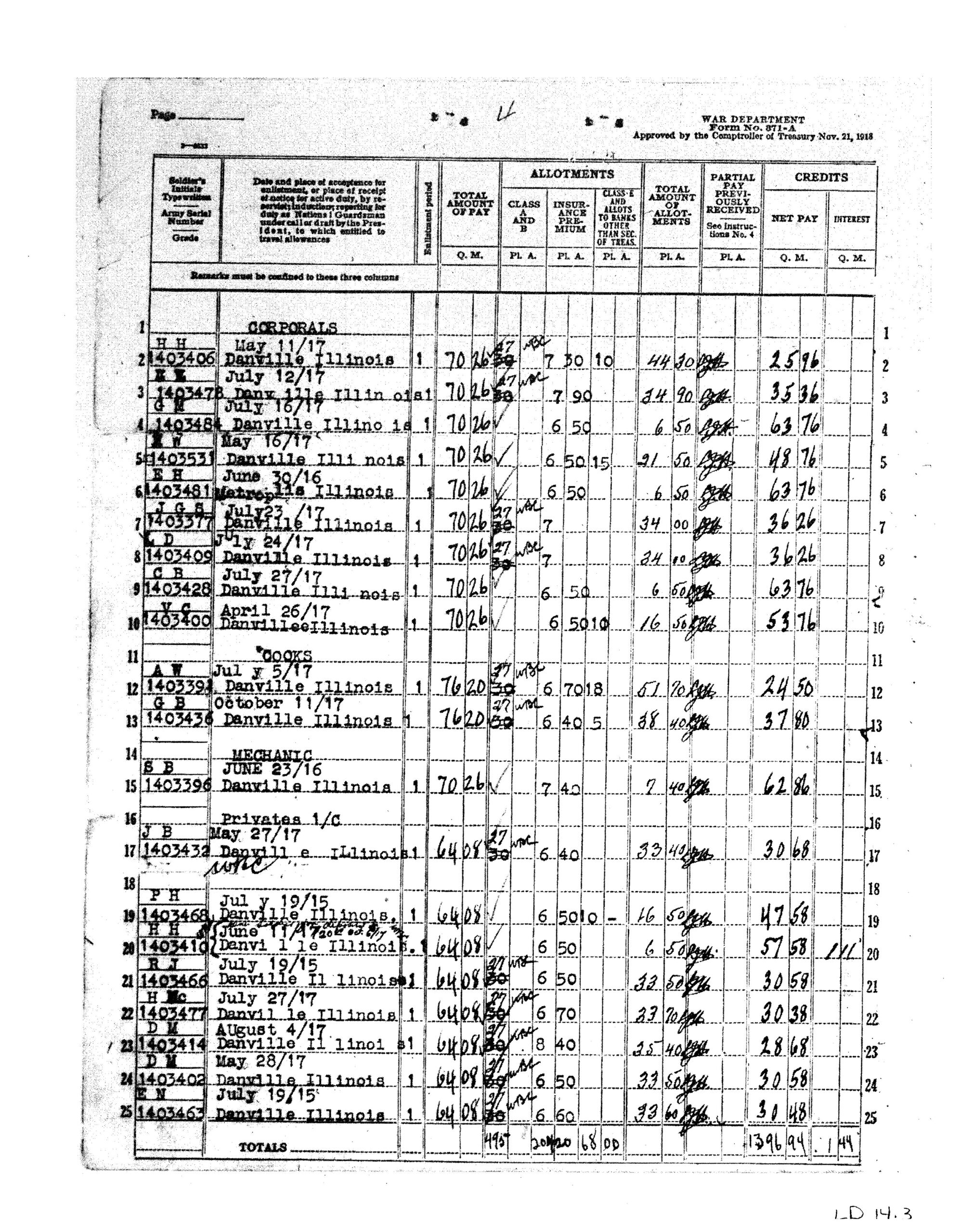
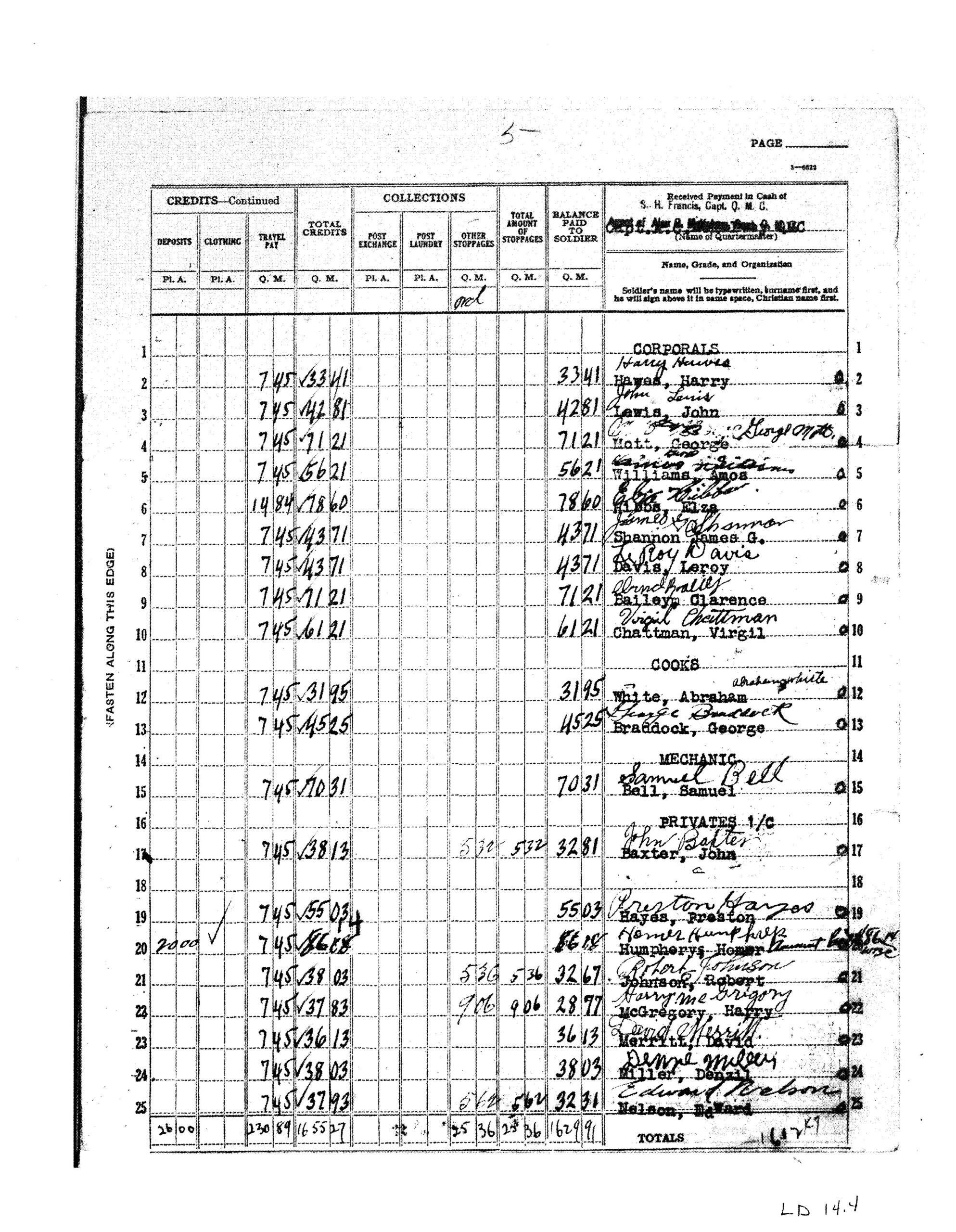
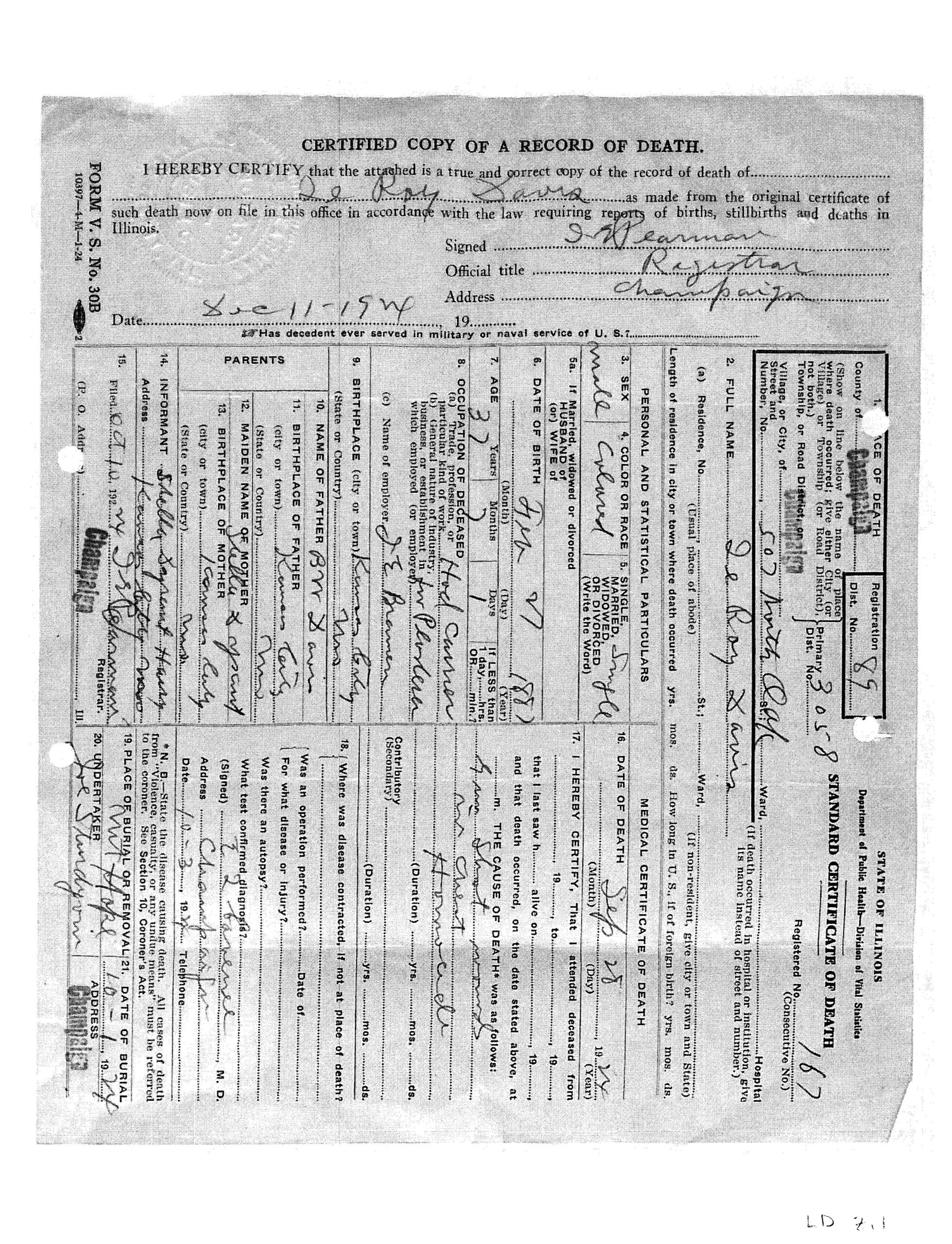

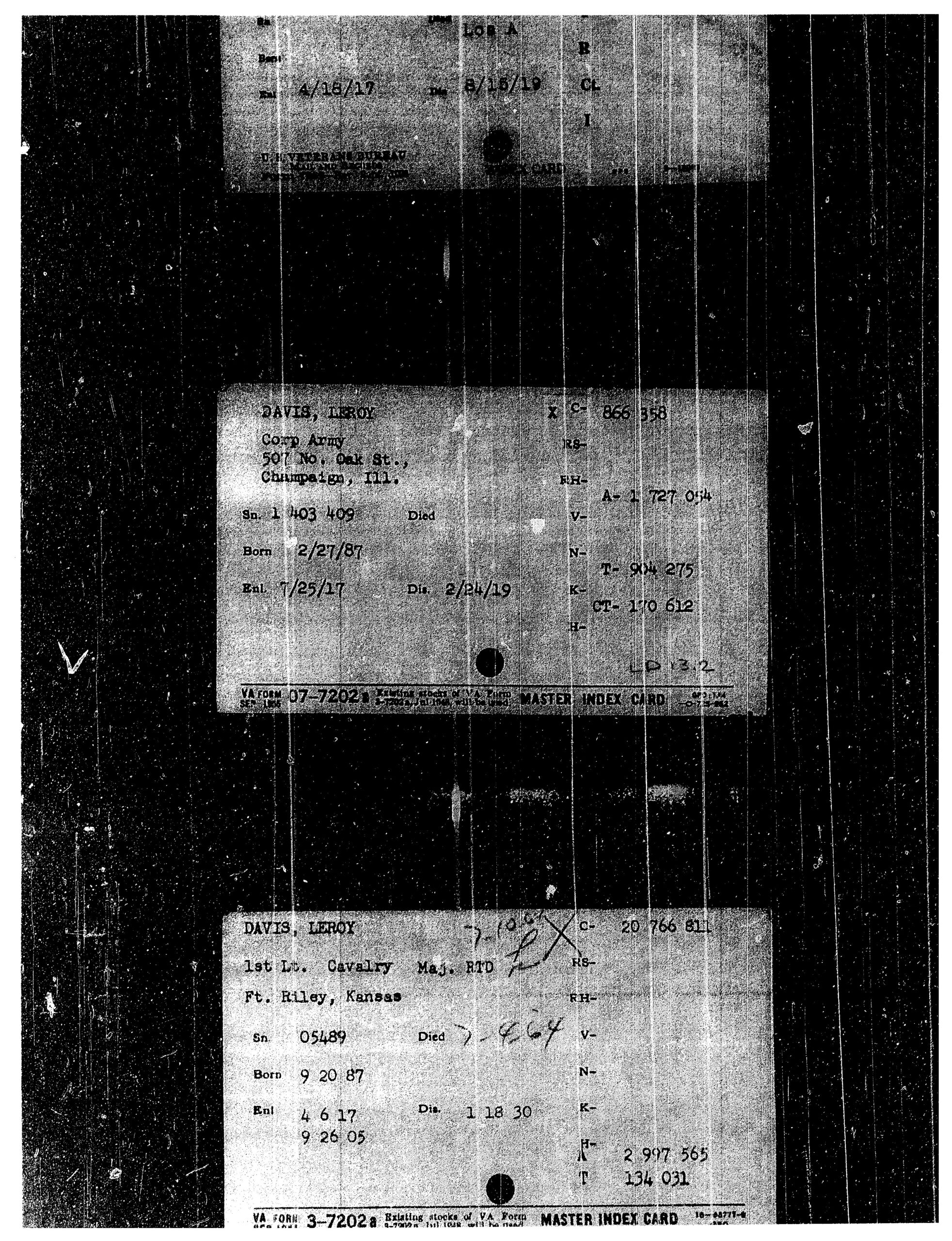

Excerpt from W. Allison Sweeney's History of the American Negro in the Great World War
“Private Leroy Davis of the same regiment, won a decoration at the Aillette Canal for bringing a comrade back under machine gun fire. When he got back to his own lines he would not trust him with the ambulance outfit, but carried him three miles to the emergency dressing station and then he ran back to the canal to get even. This little stunt saved his comrade’s life.”